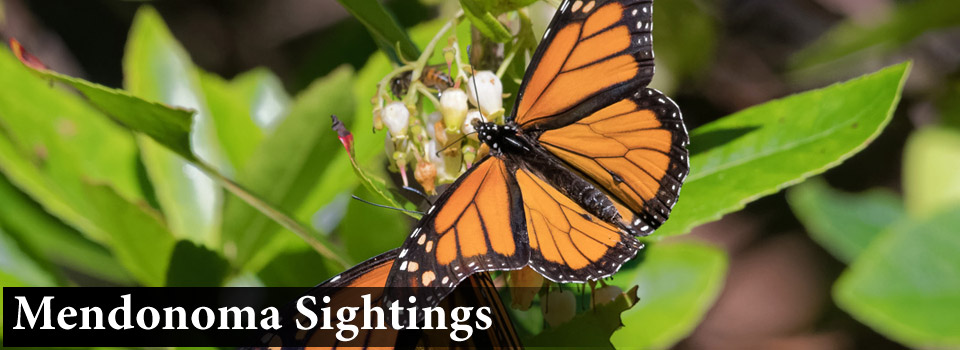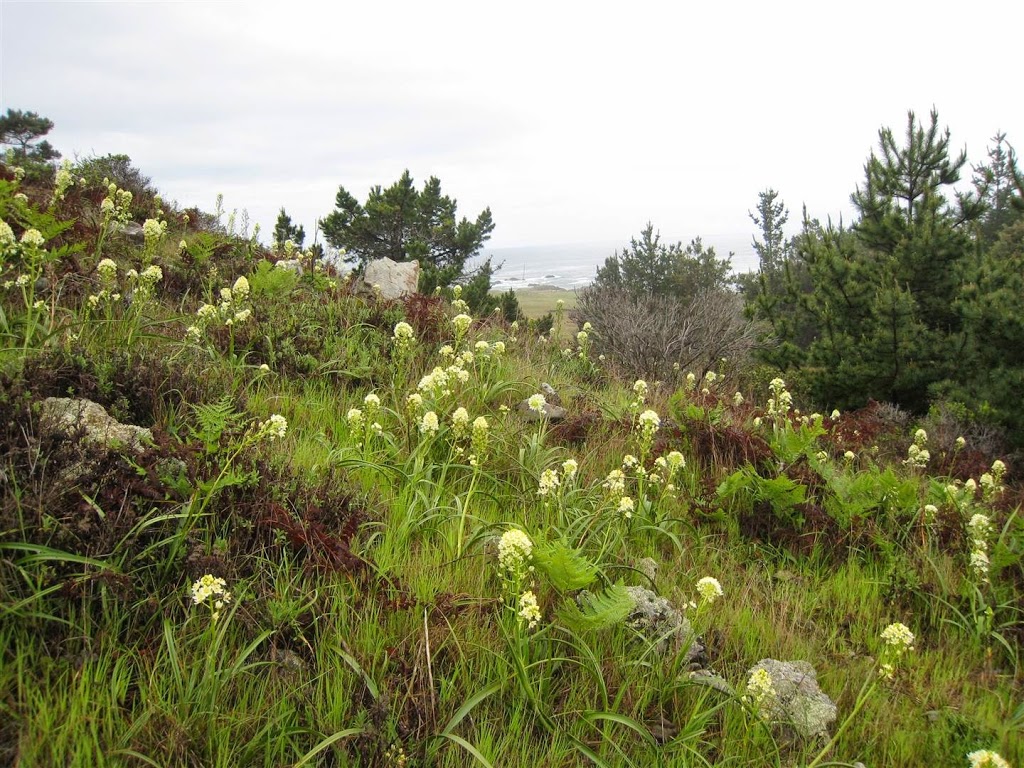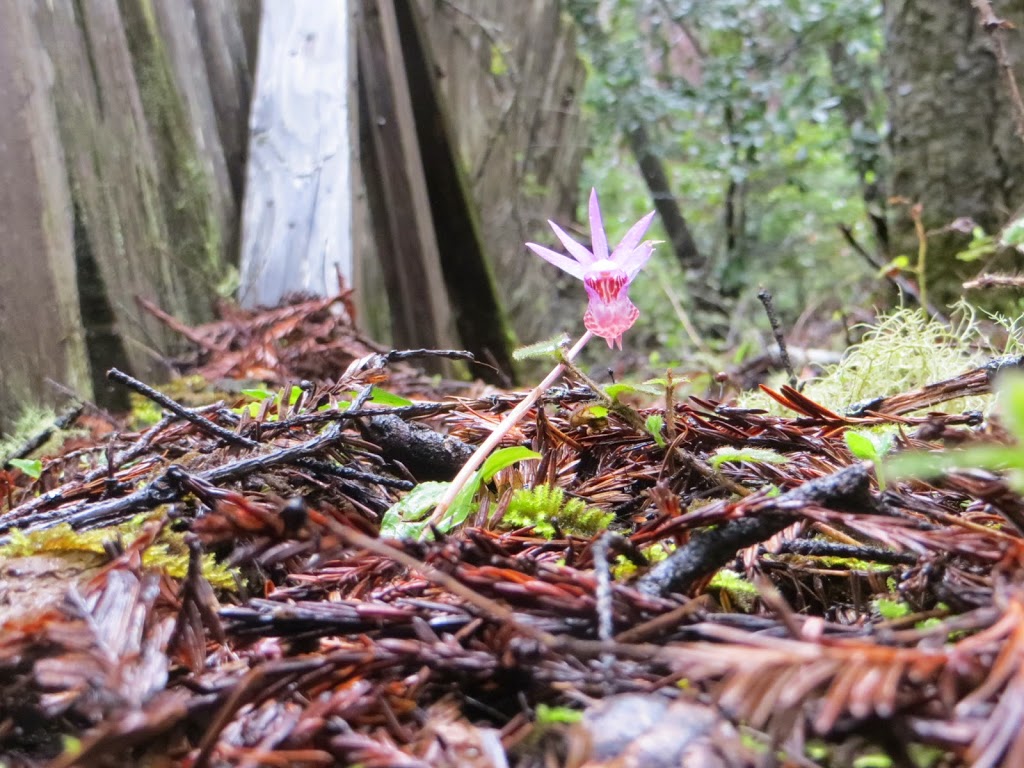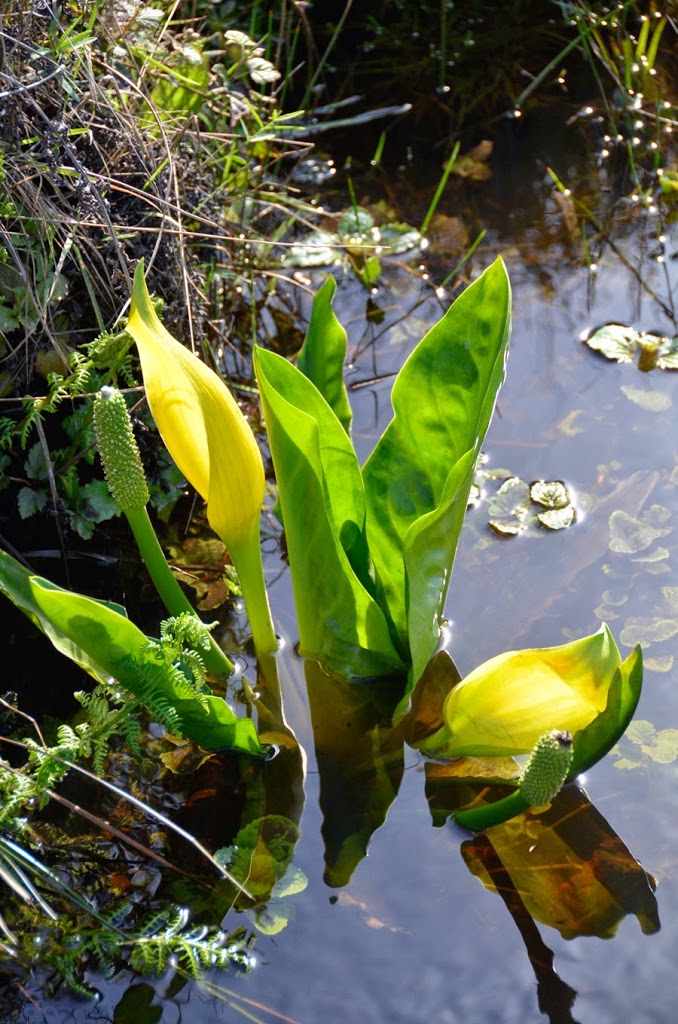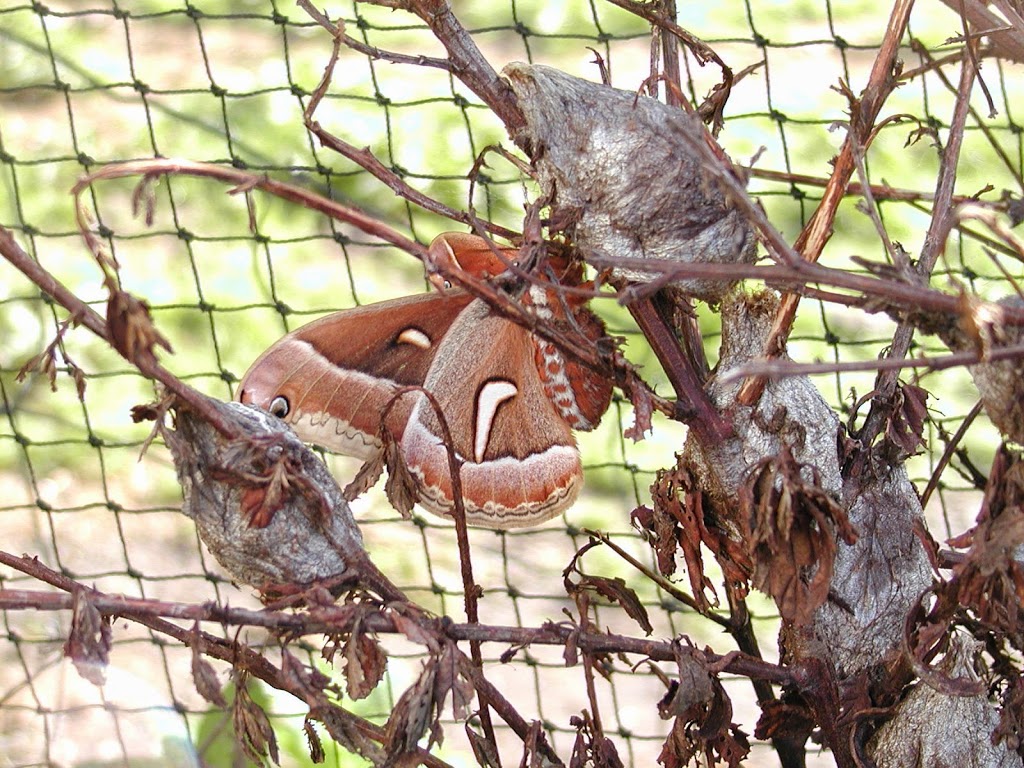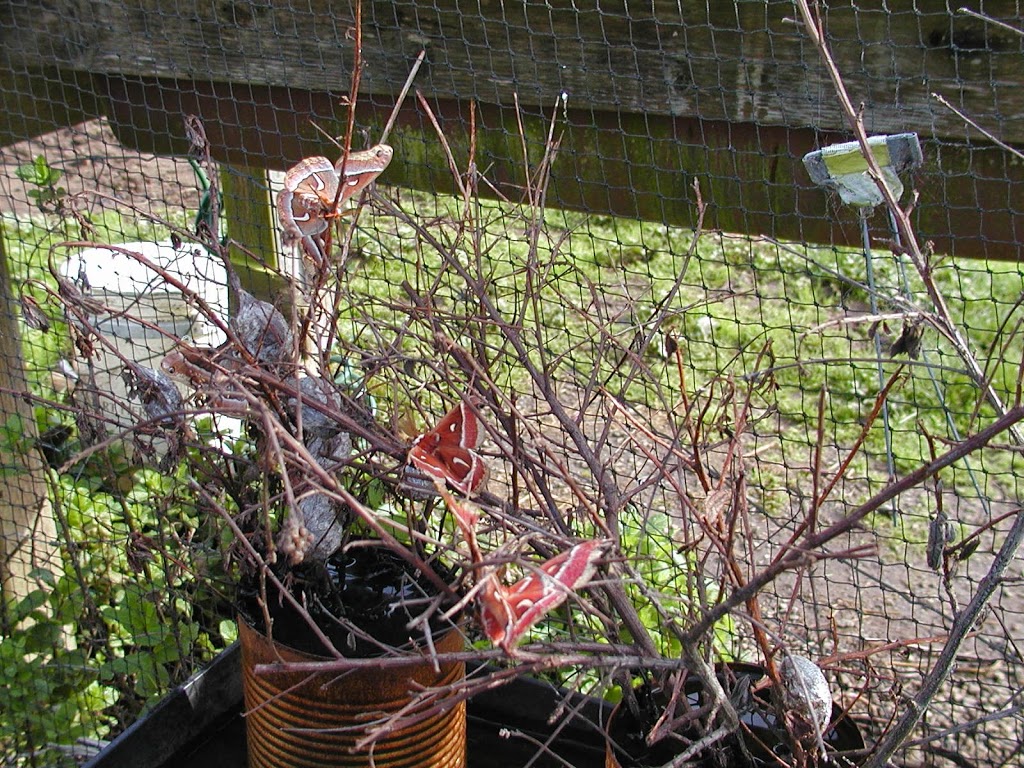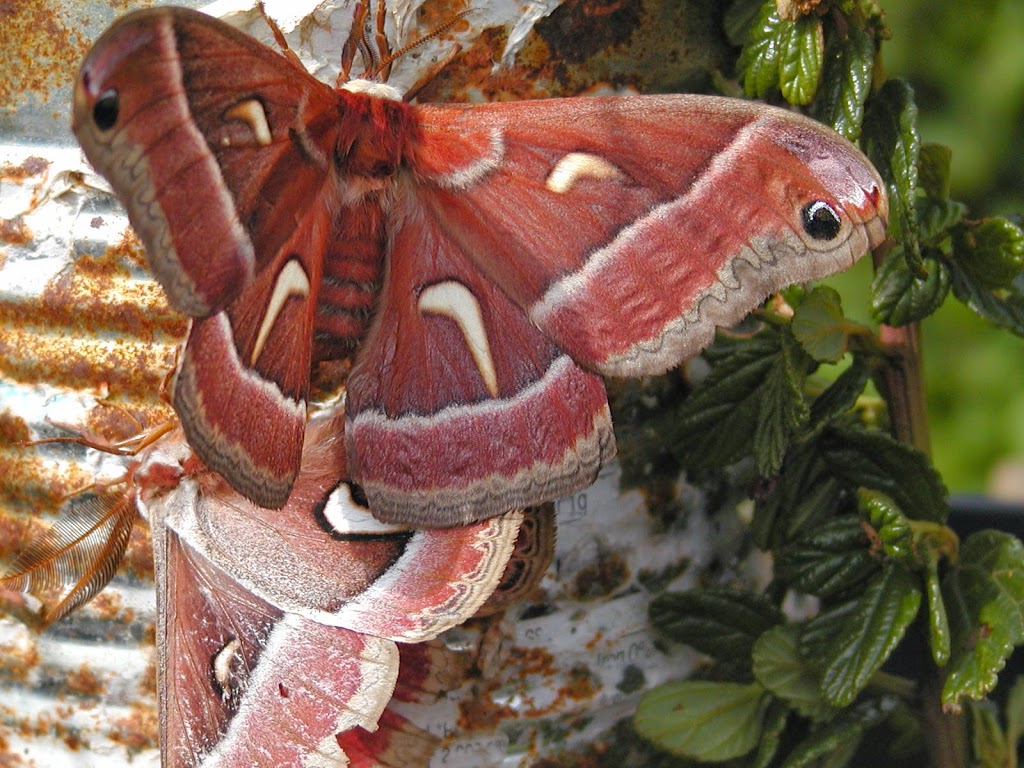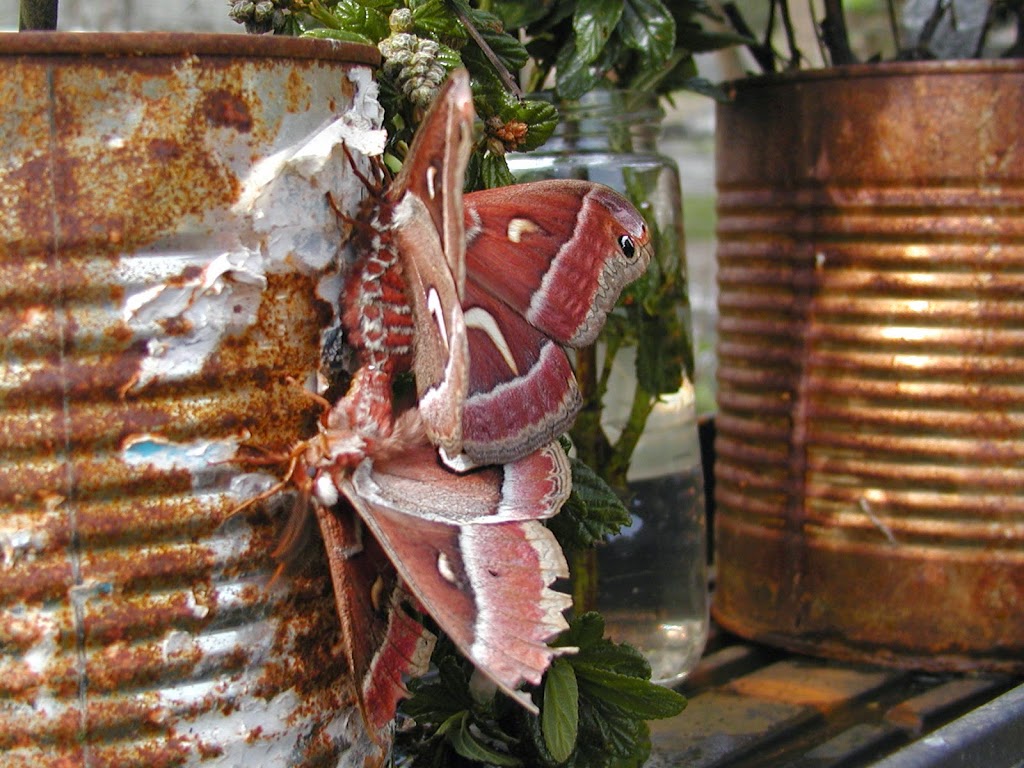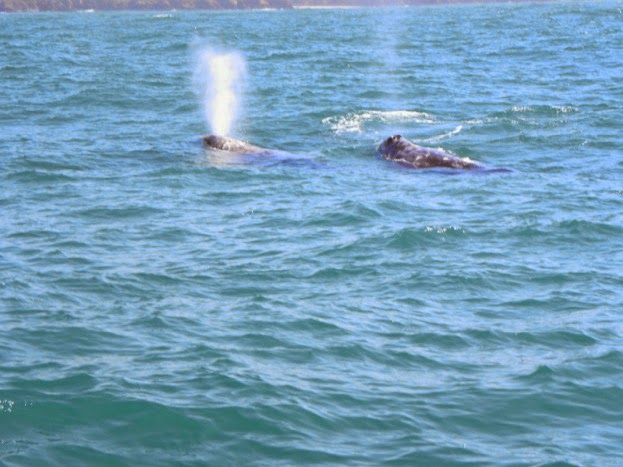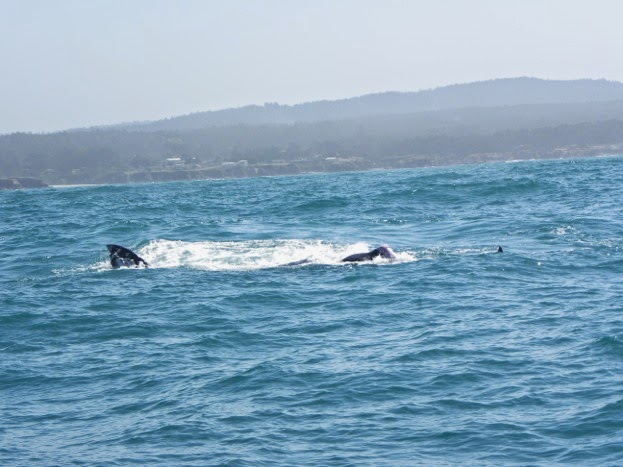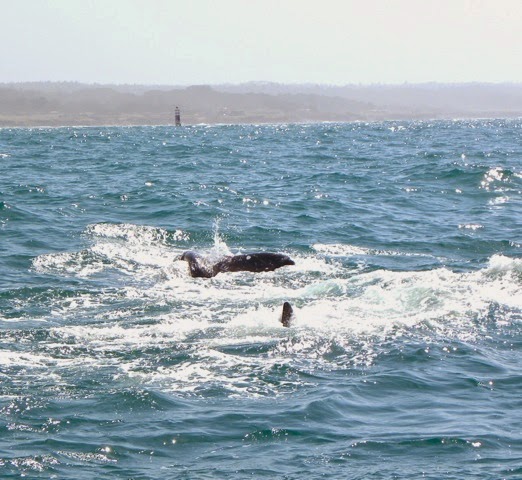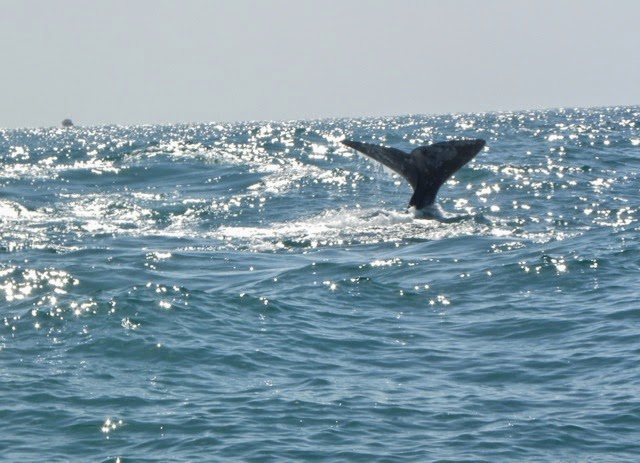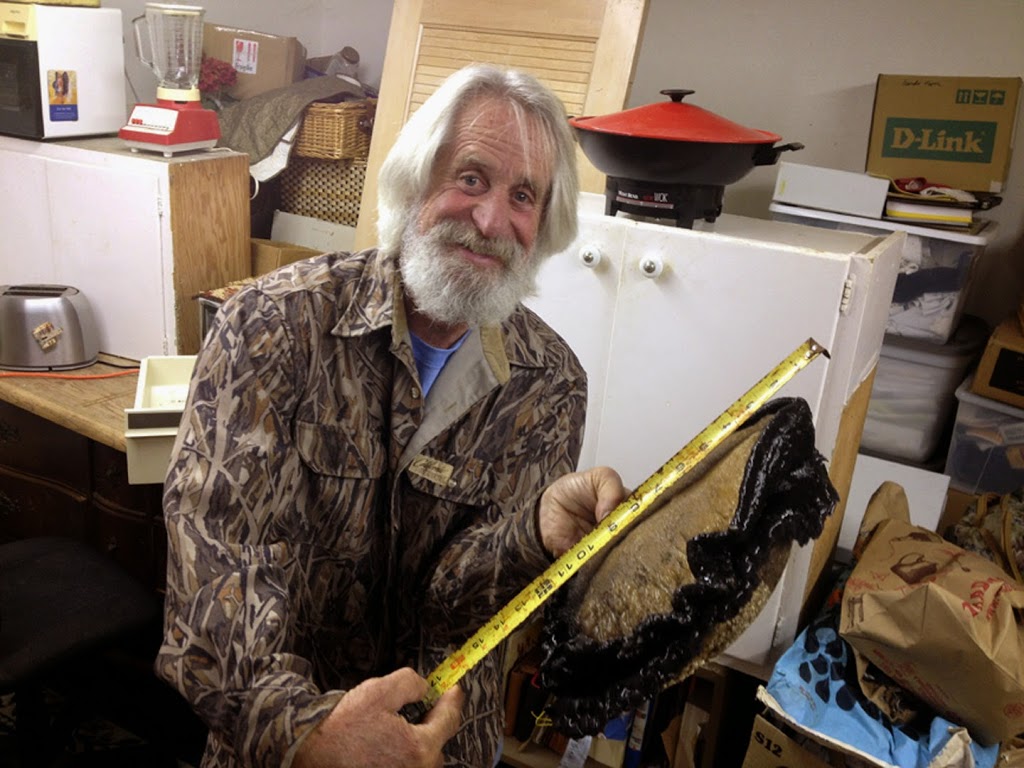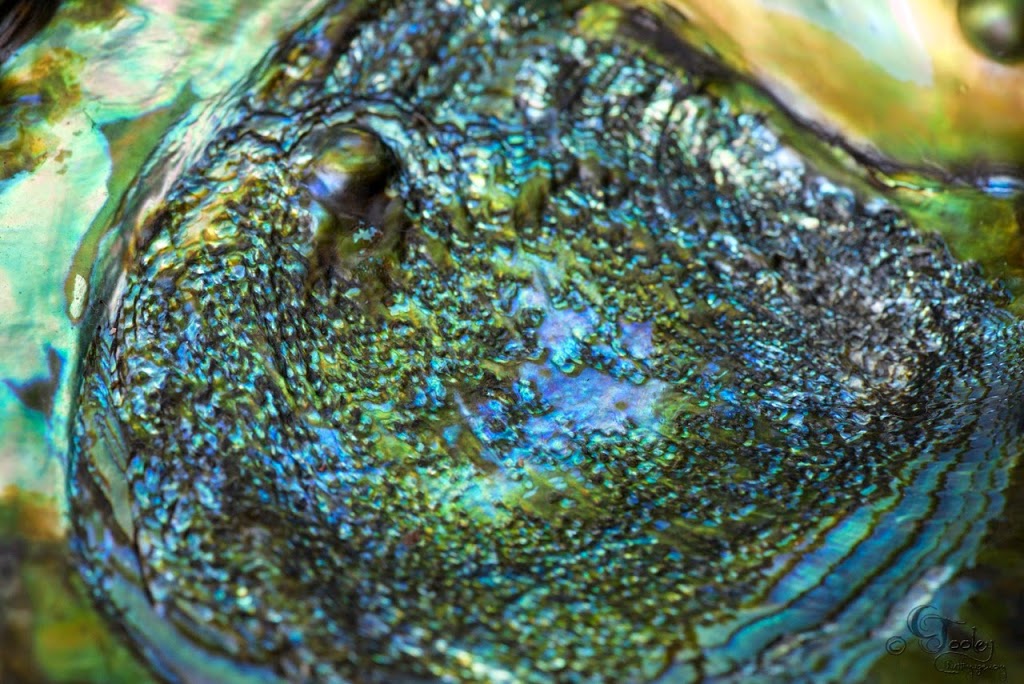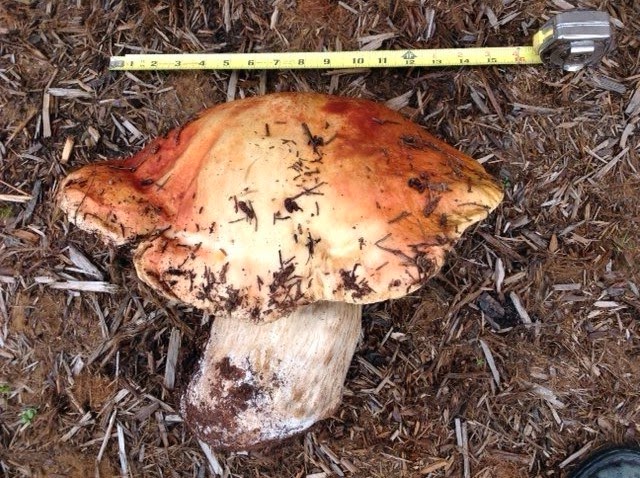I'm going to let Jerry Rudy tell this story. He wrote several weeks ago, "You will remember the Silk Moth that ended up on my back door about a year ago. She laid a bunch of eggs on a native azalea in our yard. These hatched into larvae that John Sperry and I kept fed with Ceanothus until they built their beautiful cocoons. The cocoons were attached to sticks and I placed several in our garden that is protected by netting and waited for the next stage of their life.
"Three days ago moths began to emerge from those cocoons; a female and two males so far. This is the female shortly after she emerged from her cocoon. She has inflated her wings and is ready to mate."
Jerry continues, "That night several males showed up and we found them hanging on the garden netting trying to enter the garden. We picked them off the netting and placed them near the new female. The female is still hanging onto her cocoon on the far left."
The female has moved away from her cocoon. One of the visiting males has attached his abdomen to hers and he hangs below her. Notice the difference in the size and shape of the male and female antennae."
"They remain attached for several hours as the male transferred seminal fluids to the female. By the end of their mating, the male's abdomen has shriveled up, while the female's became much plumper. Note how worn the male's wings are as a result of his efforts to find this female.
"Since these pictures were taken the female has laid several clutches of eggs that we intend to move to a nearby Ceanothus bush. Thus the circle has closed."
I thank Jerry for allowing me to share his photos with you here, showing us something we might never get to see. To see the photo from last year of the female laying her eggs, here is the link: http://www.mendonomasightings.com/2013/04/29/a-photo-of-a-lifetime-a-ceanothus-silkmoth-lays-her-eggs/
